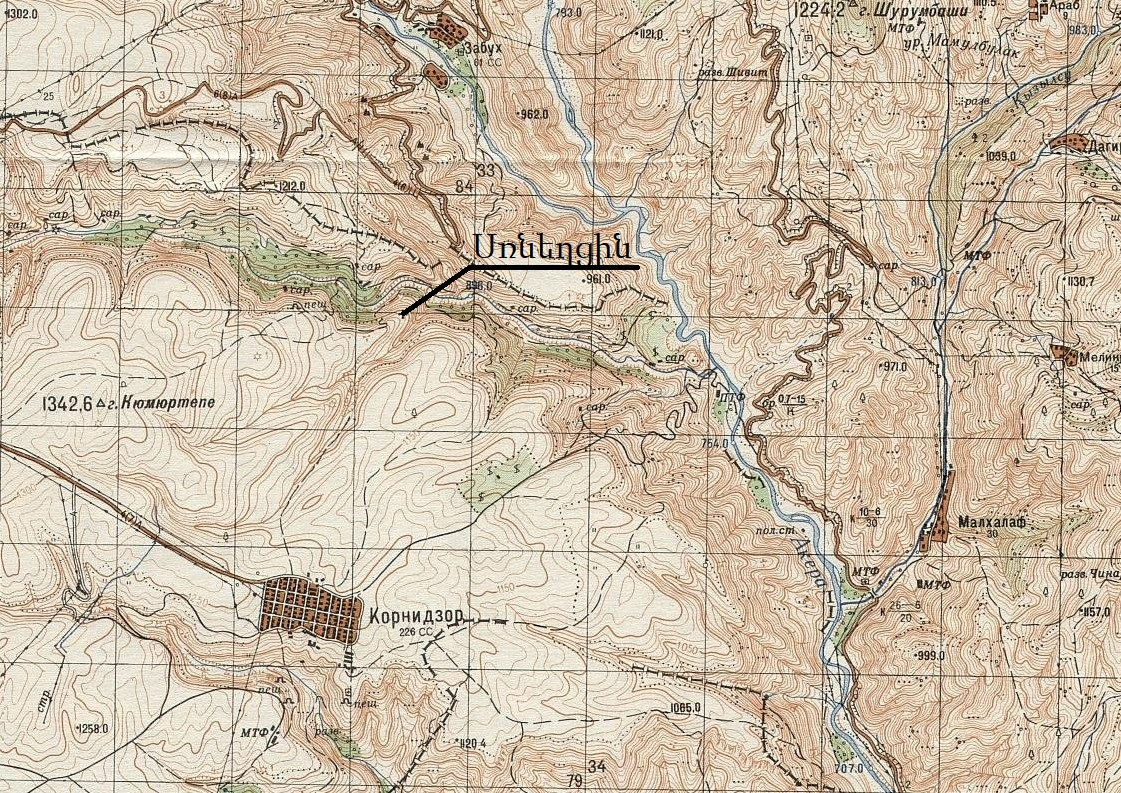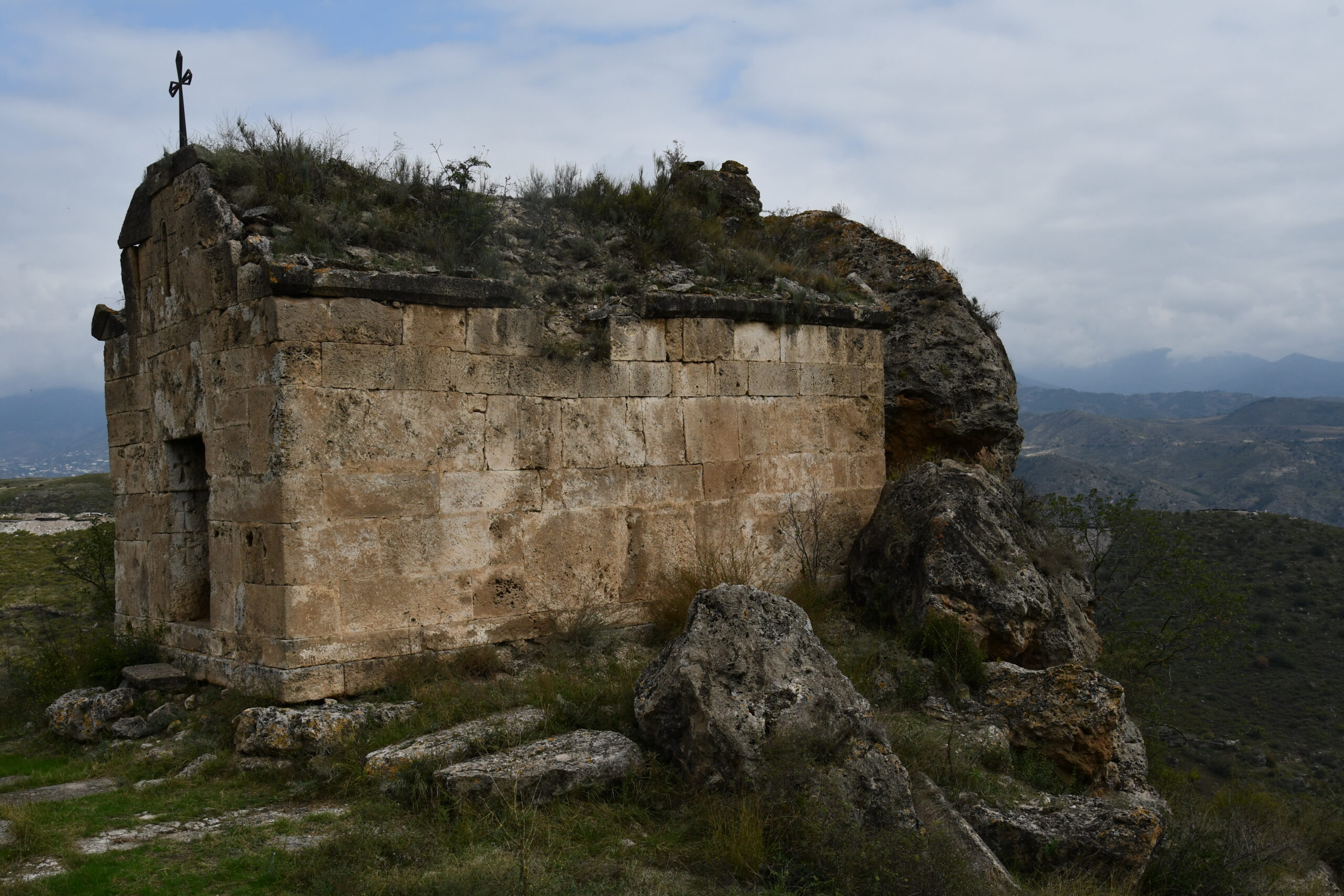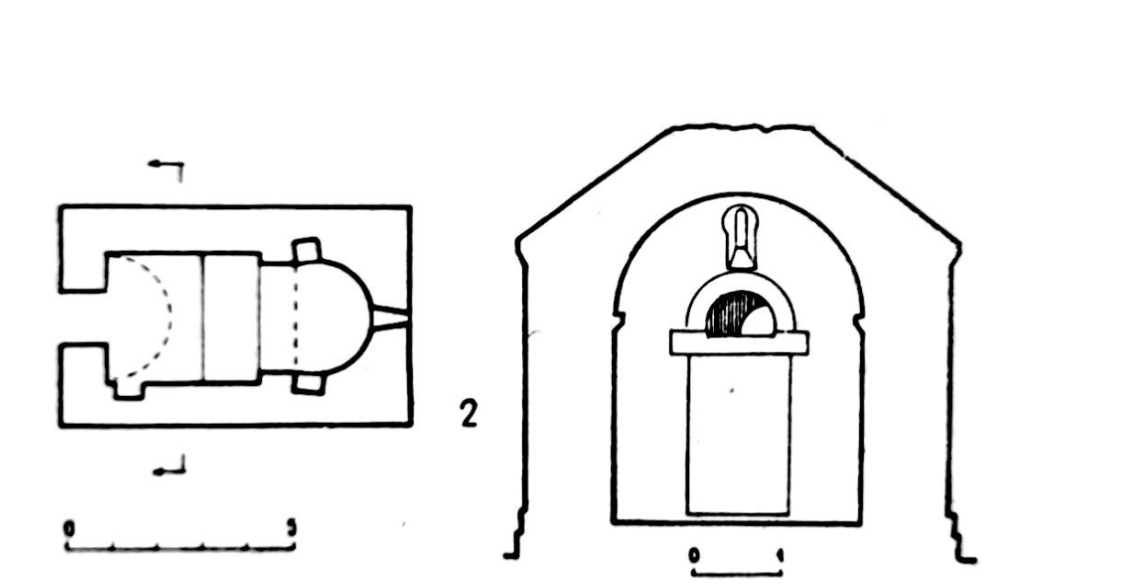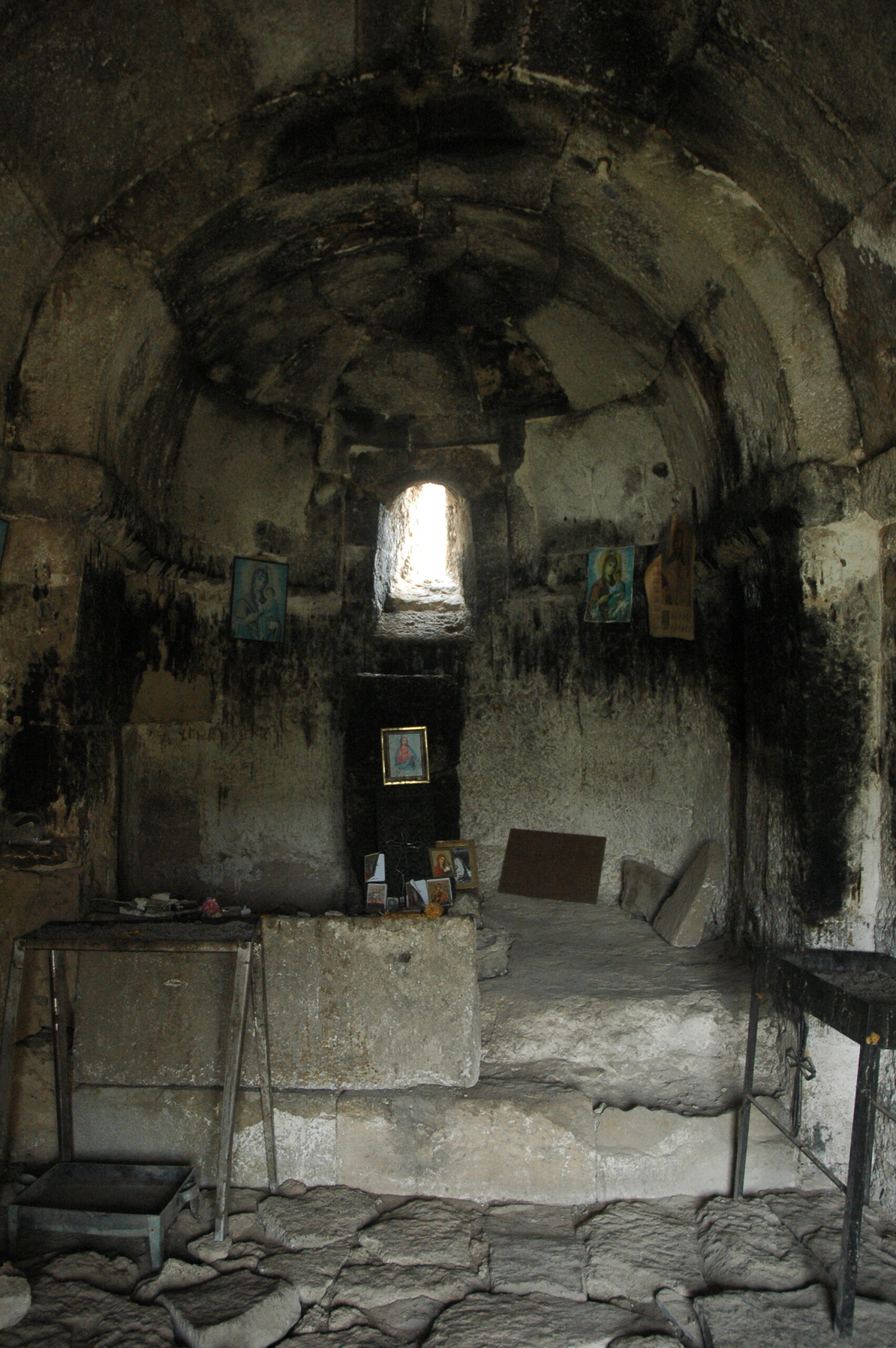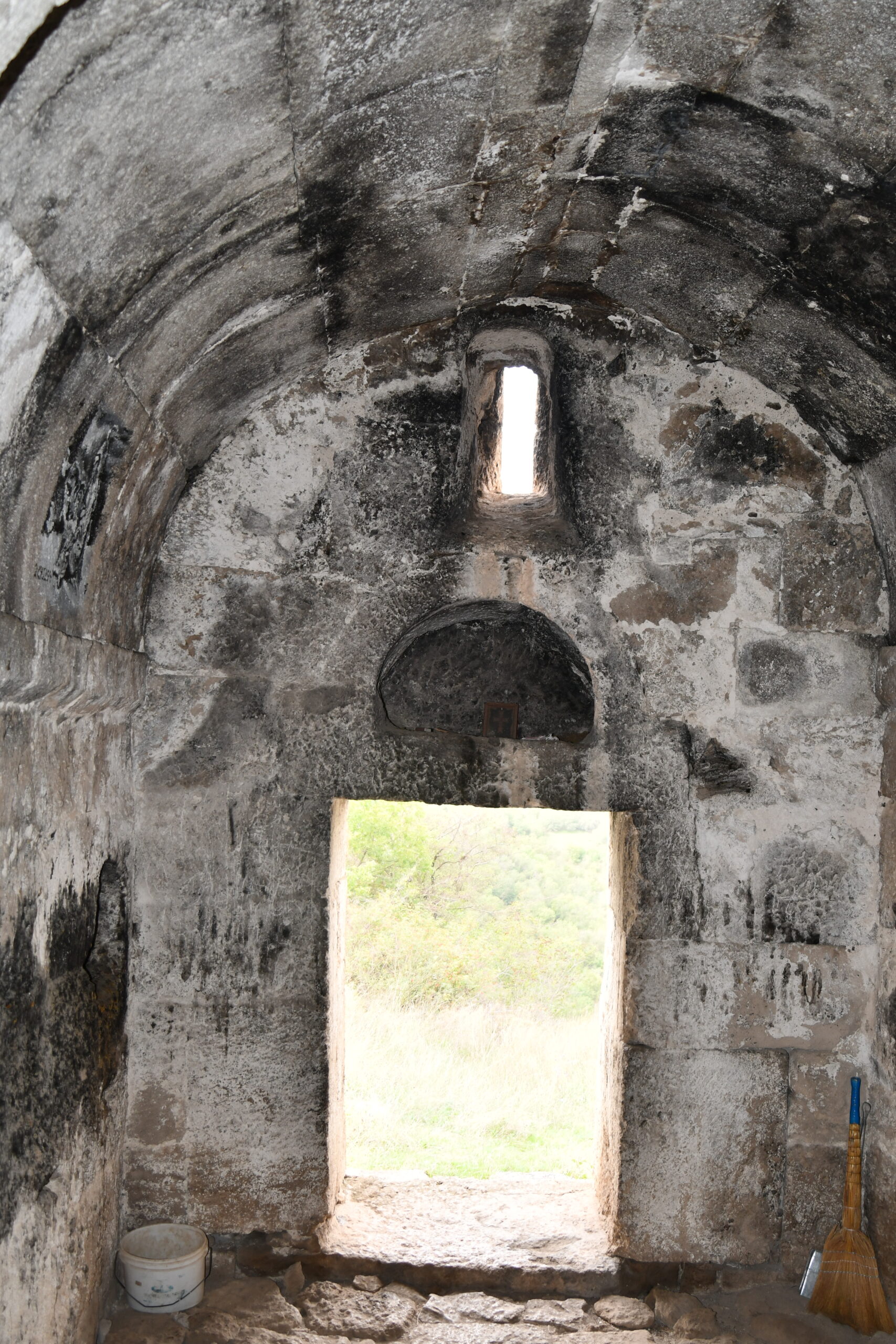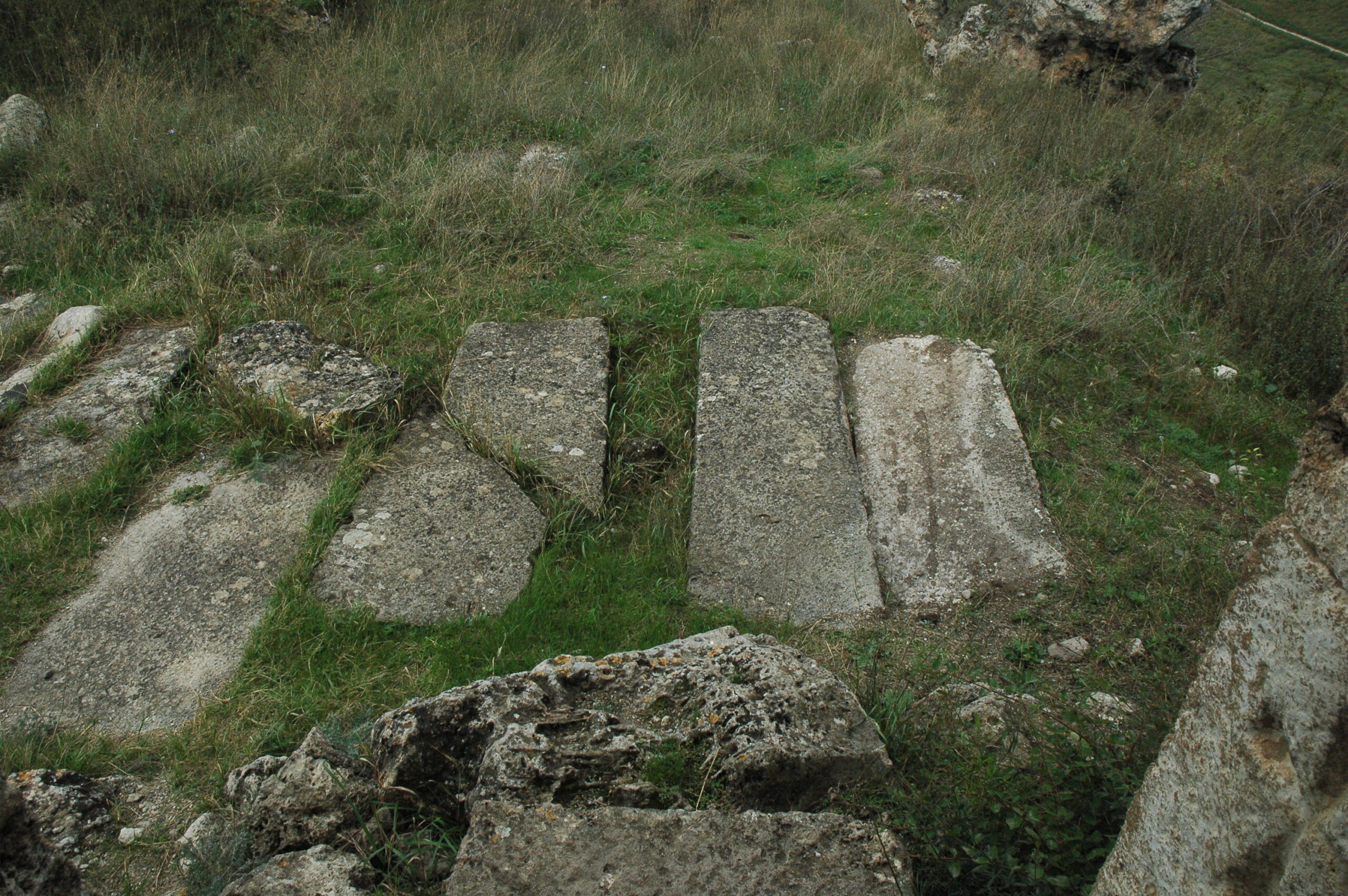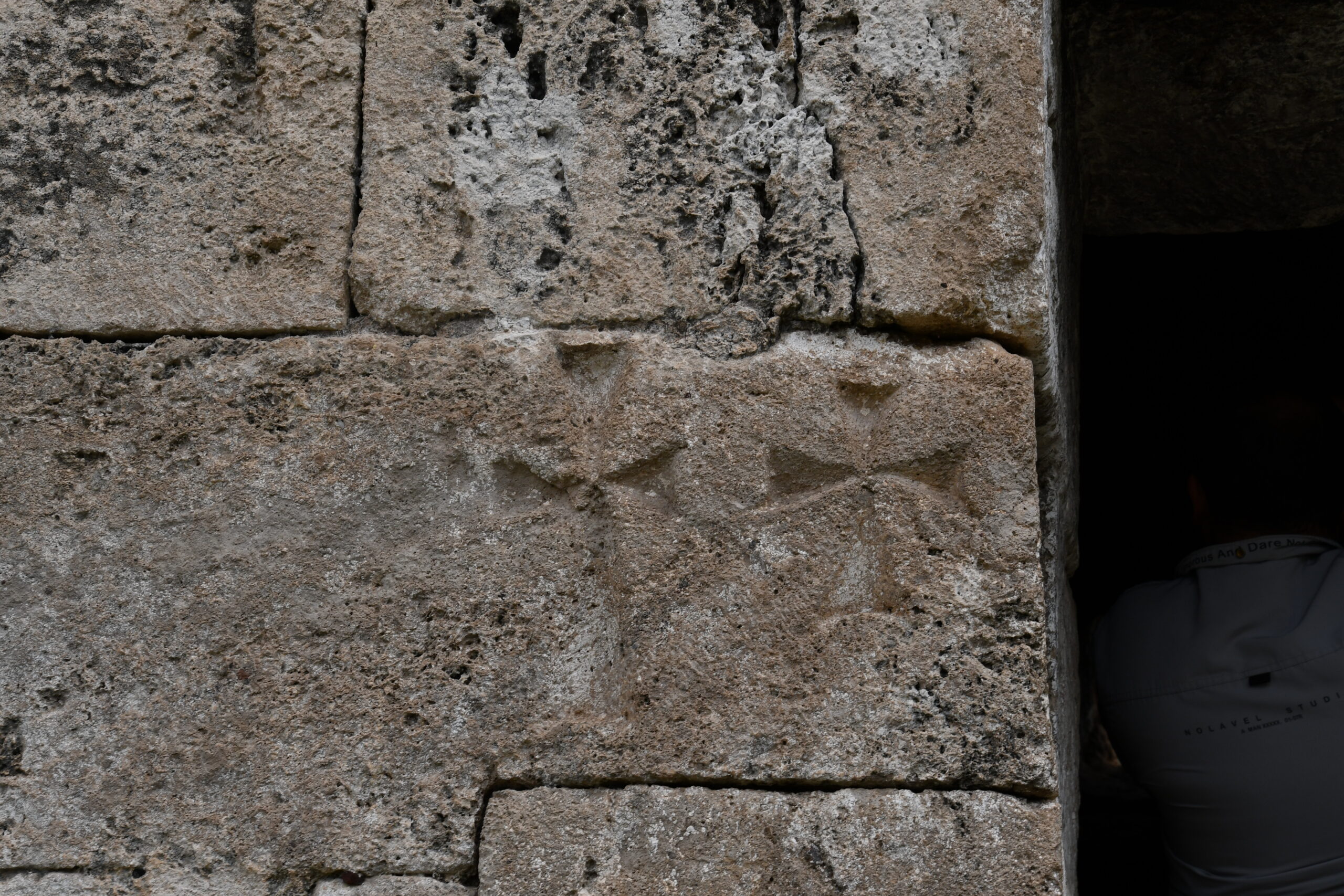The Srnyegtsi church
Location
The namesake village of Tegh, which serves as the center of the Tegh enlarged community, is situated in the Syunik region of the Republic of Armenia. It is located 100 km away from the regional center, Kapan, and 20 km away from the city of Goris. It is situated at an altitude of 1360 meters above sea level. 5.9 km to the east of the village center, north of Kornidzor, lies the early medieval church of Srnyeghtsi (Serin Yeghtsi) (Fig. 1).
Historical overview
The historical Tegh settlement has been mentioned since the 10th century, when Queen Shahandukht of Syunik founded and built the village in 988, dedicating it to the Tatev Monastery (Orbelean 1910, 252).
According to M. Hasratyan, Srnyeghtsi and the old building site not far from it are likely to be Katavank and Patandavank of Haband province mentioned by Stepanos Orbelyan (Hasratyan 1985, 244).
The name Srnyeghtsi is etymologically translated as "a church on top of a hill" or "a church on a hillside." "Ser" means hilltop, and "yeghtsi" means church (Ter-Minasyan 1986, 60; Khurshudian 2022, 399).
There are no inscriptions on the structure, nor the adjacent tombstones.
Architectural-compositional examination
The early medieval church of Srnyeghtsi (dating back to the 5th-6th centuries) is a single-nave vaulted hall with external dimensions of 7.77x5.41 meters (Fig. 2, Hasratyan 1985, 244).
The structure is built on a two-level ground pier (base). On the east side, it features a tabernacle with an accentuated horseshoe-shaped plan, included within the rectangular border of the outer walls. The arch of the tabernacle is also horseshoe-shaped (Fig. 3). Constructed of local white basalt-type hewn large stones (averaging 1x2 meters), the walls are 1 meter thick. The internal space of the structure measures 3.36x3.55 meters (Ter-Minasyan 1986, 60).
The entrance to the church is from the western side (with an opening width of 1.15 meters), and it has two windows on the western and eastern sides. The bema is 0.5 meters higher than the prayer hall, indicating that it was raised at a later time. The tabernacle has a corridor under the dome of the conch, which continues along the north and south walls.
Inside, positioned in the upper section of the entrance lintel, there exists a horseshoe-shaped unloading niche, measuring 0.7 meters in depth (Ter-Minasyan, 1986, p. 60, fig. 4).
The structure is well-preserved, with only the roof beams having fallen. In front of the church, on the western side, there are tombstones (Fig. 5), and on the walls, there are cross images associated with the developed Middle Ages (Fig. 6).
Bibliographic examination
In the second issue of Corpus of Armenian Epigraphy, S. Barkhudaryan, while discussing the monument of Kotrats Yeghtsi, presents it as "Srnyeghtsi" or "Broken Yeghtsi" (CAE 2, 66), although two different monuments appear under these names.
The condition following the Azerbaijani aggression in 2020-2022
After the 44-day Artsakh war and subsequent border changes, the Srnyeghtsi church now stands at an observed distance of 450 meters from the border.
Bibliography
- CAE 2 - Corpus of Armenian Epigraphy, issue 2, Goris, Sisian and Ghapan regions, compiled by S. Barkhudaryan, Publishing House of Academy of Sciences of Armenian Soviet Socialist Republic , Yerevan, 1960.
- Khurshudean 2022 - Khurshudean S., Historical Monuments of Tegh Village and Newly Discovered Lithographs, Zion, No. 8-12, Jerusalem.
- Hasratyan 1985 – Hasratyan M., Historical-archaeological studies, Yerevan.
- Ter-Minasyan 1986 - Ter-Minasyan A., The Early Medieval Monuments of Historical Syunik, Journal of Social Sciences, Volume 1/1, Yerevan, pp. 58-65.
- Orbelian 1910 - Stepanos Orbelian, History of the Province of Syunik, Tiflis.
